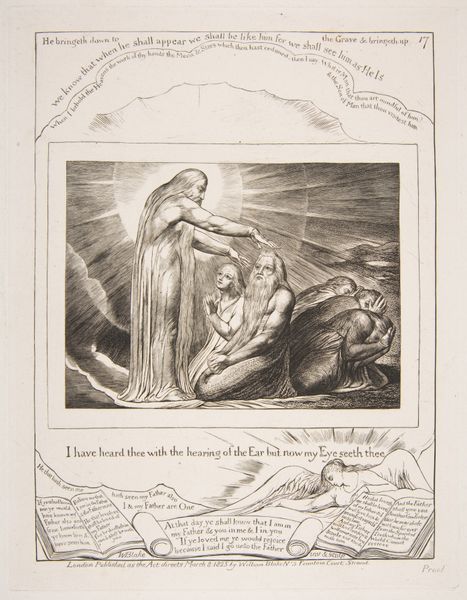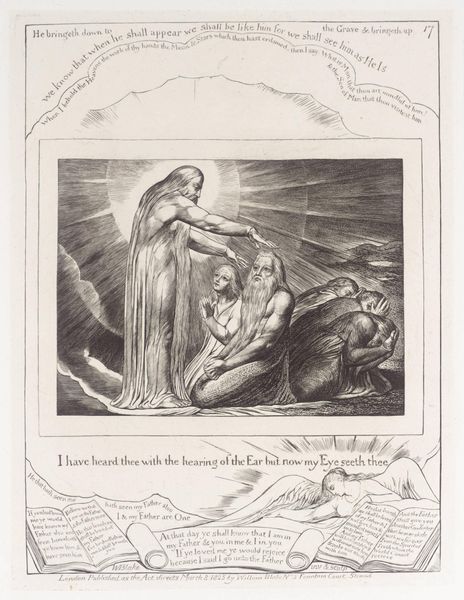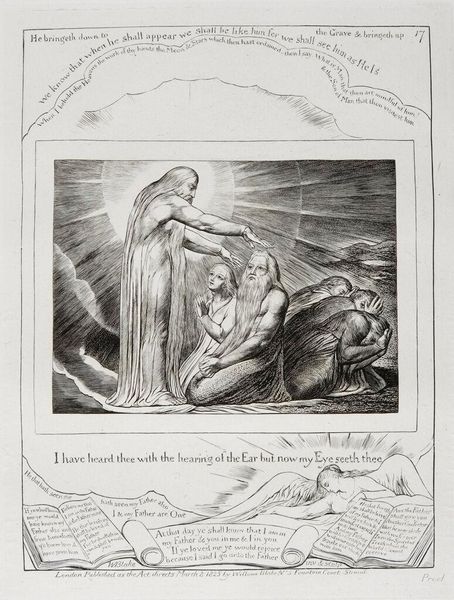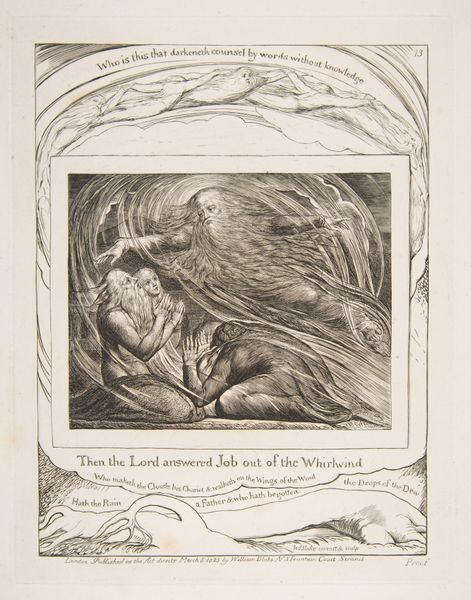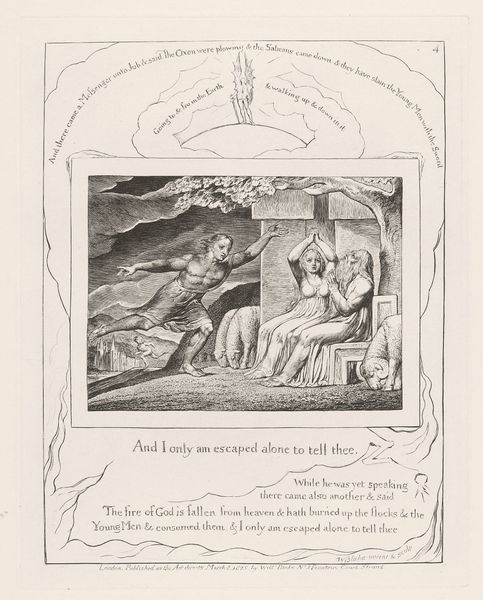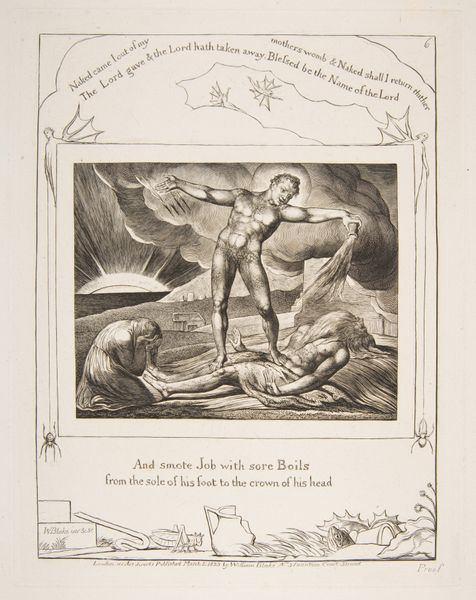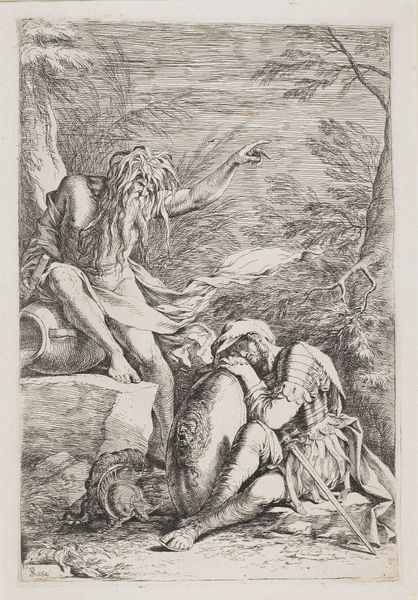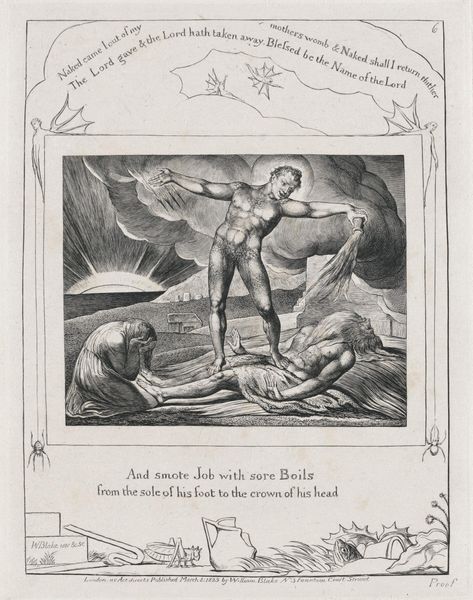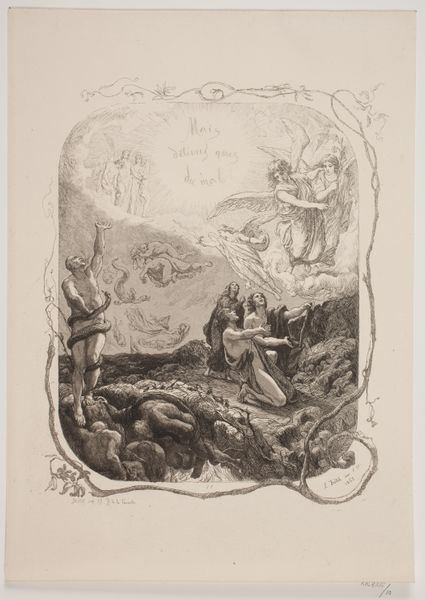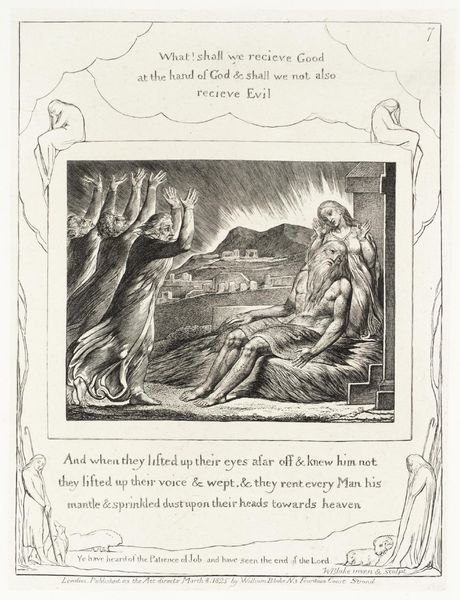
print, engraving
#
narrative-art
# print
#
figuration
#
romanticism
#
line
#
history-painting
#
engraving
Copyright: National Gallery of Art: CC0 1.0
Curator: Let’s turn our attention to “The Vision of God,” a print made around 1825 by William Blake. Editor: Well, right off the bat, I feel a sense of somber awe. It's mostly grayscale, with a luminous central image and an almost claustrophobic border of text. A little intimidating, but I’m curious. Curator: Blake, with his intensely personal style, delves deep into religious and philosophical themes, doesn’t he? He's channeling the Book of Job here. The engraving shows a radiant, God-like figure placing hands on an older, bearded man, while a younger, almost pleading figure kneels nearby. It's like a divine bestowal of grace, surrounded by figures in states of contemplation and despair. Editor: Yes, it has a striking sense of contrasting emotions, each contained neatly within the composition. Formally, Blake's reliance on stark line work creates this ethereal, almost otherworldly feel. Do you think that's intentional, an effort to visually convey an existence beyond human experience? Curator: Absolutely. Blake saw his art as a conduit for spiritual truth. He pushes the boundaries of our perception. The script wrapped around the image creates such an interesting framework. It brings textual authority to the pictorial narrative, weaving word and image seamlessly. They act almost as counterpoints and reinforcements for the visual narrative. Editor: That's very insightful. Thinking of how it might appear, it's fascinating to consider this work within the Romantic movement; its rejection of industrial reason and emphasis on emotion, spirituality and imagination, and Blake seems to tap into the collective longing of the era, an almost aching need for meaning and the divine. It challenges our understanding of faith and revelation. Curator: His singular use of line does invite introspection. It’s not just about depicting a scene but more an exploration of spiritual connection through suffering. Editor: Yes, exactly, an intersection between seeing and understanding, isn't it? This piece offers viewers, as much as Blake himself, a place to contemplate their own "vision of God." Curator: That is what makes the print resonate to this day. The visual narrative offers infinite depth, beyond the obvious subject. It invites a journey within, like a whisper in your soul. Editor: I leave “The Vision of God” pondering about this: Do we ever truly *see*? And is understanding always just a step behind that visual moment?
Comments
No comments
Be the first to comment and join the conversation on the ultimate creative platform.
